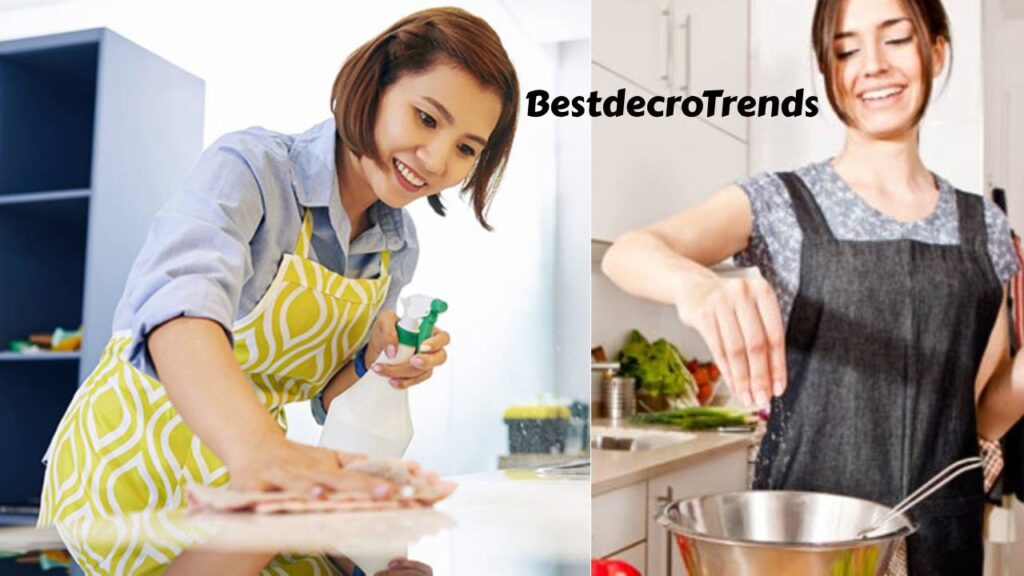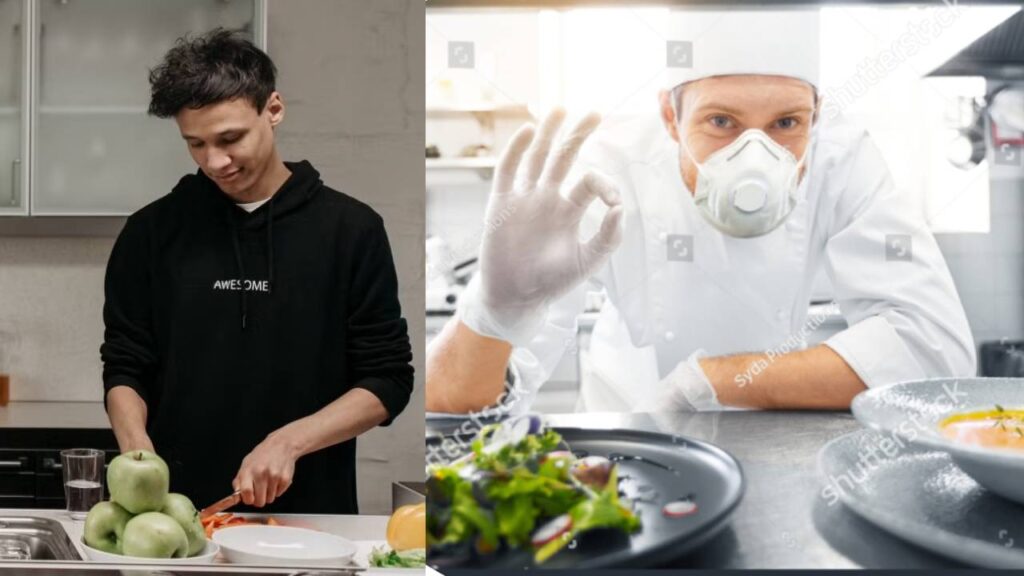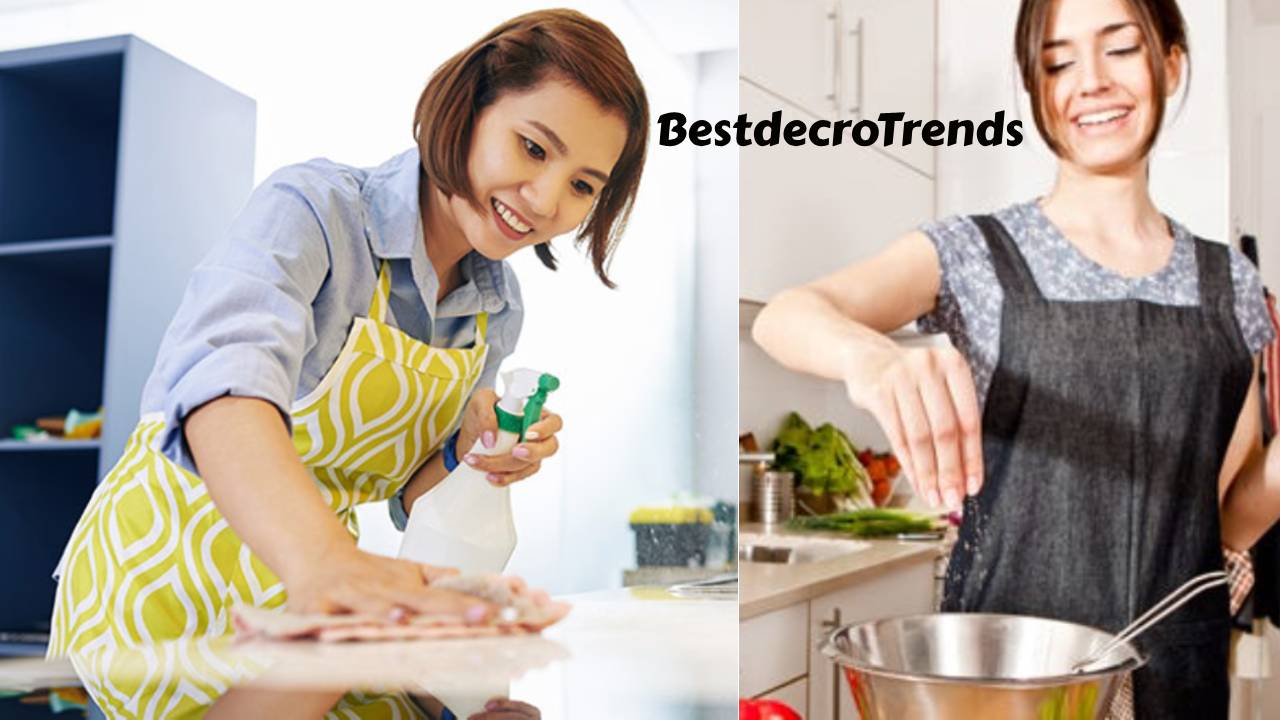Your kitchen is the heart of your home—a place where meals are prepared, memories are made, and family gathers. However, it can also be a hub for hidden health and safety risks. From improper food storage to unnoticed hygiene issues, your kitchen might not be as safe as you think. In this post, we’ll explore practical ways to assess the health and safety of your kitchen while offering tips to make it a safer and healthier space healthy kitchen
Table of Contents
The Importance of a Safe and Healthy Kitchen?

The Importance of a Safe and Healthy Kitchen? Kitchens are central to our daily lives, but they also harbor potential dangers. Unsafe food handling can lead to illnesses, while improperly maintained appliances or tools can cause injuries. By paying attention to these risks, you can protect your family and ensure your kitchen remains a positive, productive space.
How to maintain bathroom hygiene? Tips for a Cleaner, Healthier Space
How Safe is Your healthy kitchen?
Common Health Hazards in Kitchens
- Cross-Contamination
One of the biggest culprits for foodborne illnesses is cross-contamination. This happens when harmful bacteria or pathogens transfer from one surface to another—like from raw chicken to your cutting board or utensils.
How to avoid it:
- Use separate cutting boards for raw meat, seafood, and produce.
- Wash your hands, utensils, and surfaces thoroughly with soap and warm water after handling raw food.
- Sanitize countertops regularly with a kitchen-safe disinfectant.
Many accidents often happen in the kitchen, such as cuts, burns, slipping, etc. So keep the following things in mind in the kitchen.
How Healthy and Safe Is Your Kitchen?

10 importance of kitchen hygiene
* Keep a wiping cloth, a first aid kit in the kitchen which contains band-aids, medicine for cuts and burns, and Dettol.
*Cooking is the second biggest cause of domestic pollution. Gas stoves emit dangerous gases like nitrogen oxide, carbon monoxide etc. To reduce their level, maintain good ventilation or install an exhaust fan. This reduces dust accumulation in the kitchen. Install the exhaust fan on that side of the wall where good air comes from the opposite direction. Clean the fan every six months as per the manufacturer’s instructions. If there is no outside air, install a ceiling fan in the kitchen as well.
what are the 10 hygiene rules in the kitchen

*Never place a hot cooker near a window, otherwise the glass of the window may crack due to the heat of the cooker.
*Keep the gas cylinder in an open place. Do not pile up any other things here and do not cover the gas pipe with anything. If you see any rips or cuts anywhere, get the pipe replaced immediately.
*Close the gas cylinder valve before sleeping at night.
*While going out of the house, check whether the cylinder valve is closed or not.
*If you smell gas, turn off the valve. Open the window. Turn off the electric switch and call the gas company.
* Make sure to install fluorescent lights in the place where you work in the healthy kitchen.
* Make sure that the microwave, cooking range or oven is placed with at least a 40 cm wide space on one side.
*The cooking platform should be at such a height that you do not have to bend too much or work too high.
*Similarly, cupboards should also be at such a height that you can easily take out or keep things in them. The same rule applies in case of sinks as well.
*Set the cooking range in such a way that the item placed on the gas can be moved easily.
*The microwave should be placed in such a way that it is at your eye level, otherwise the hot food may fall on you.
Smart Tips for healthy kitchen
*Keep such equipment in the house which can be locked. Child lock devices are available in the market. If you have children in your house then this will prove to be very useful for you.
*Buy a cooking range which is made of glass on top.
*Always use dry part holders. Wet holders transmit heat. Dish towels are not thick enough to protect you.
*Switch off the toaster after use. If the switch is left on, the appliance may overheat or there may be a risk of fire. Take care of electrical appliances to avoid accidents.
*If the liquid has to be blended in the mixer, make sure that it is not hot. First cool it down, then put it in the blender, otherwise after blending, as soon as you open the lid of the jar, it may fly and fall on your face.
*After finishing work at night, clean the kitchen thoroughly. Wash the duster cloth and keep it. Wash it with boiled soap water every week and dry it in the sun. Always keep two sets of dusters.
*Never keep the fridge near the cooker, otherwise it will affect the capacity of the fridge. Wipe the fridge from inside daily. Dry the ice tray before filling it. Throw away the food items which are not useful. Keep the leftover food in the fridge after one hour.
*Throw wet and dry waste in separate dustbins. Clean the dustbins daily so that bacteria do not spread due to dirt.
*Keep breakable items, pesticides, detergents, matches, lighters, knives and forks away from the reach of children.
*Wear fitted clothes and aprons while cooking. Do not wear loose sleeves or dupatta. There is a greater risk of fire in these.
Good Habits for healthy kitchen
*Clean the sink, platform and dirty utensils immediately after finishing the work.
*Instead of piling up dirty utensils in the sink, clean them immediately. If you don’t want to clean them immediately, at least put the utensils under the tap and pour water over them so that it becomes easier to wash them later.
*Cut vegetables etc. on paper and throw the remaining waste in the dustbin.
*After returning from grocery shopping, put things back in place immediately. Remove empty containers immediately.
Improper Food Storage
Improper Food Storage: Inappropriate capacity of food can ruin them as well as give harbor for bugs. Besides, it increments the chances of the utilization of sullied nourishment with microbes such as Salmonella or Listeria.
Best practices:
- 1-Store all perishable items at or below 40°F (4°C) in the refrigerator.
- 2-Make use of airtight containers while storing dry goods, keeping them fresh and pest-free.
- 3-Label leftovers with dates and consume them within 3–4 days.
Unnoticed Mold and Bacteria
Dark, moist places—like under the sink or inside the refrigerator—are breeding grounds for mold and bacteria.
Prevention tips:
- Clean your fridge and pantry every few weeks.
- Check for leaks under the sink and repair them promptly.
- Avoid keeping wet sponges or dishcloths lying around; they should be cleaned and replaced regularly.
- Safety Hazards Lurking in the Kitchen
Sharp Objects
- Knives, scissors, and other sharp objects are essential tools but also pose significant risks. Dull knives, in particular, are more dangerous than sharp ones because they require more force to cut, increasing the likelihood of slipping.
Stay safe by:
Keeping knives sharp and stored in a secure knife block or magnetic strip.
Using a stable cutting board with a non-slip base.
Teaching children how to handle sharp tools safely (or keeping them out of reach).
- Hot Surfaces and Burns
Stove burners, ovens, and even hot cookware can easily cause burns if handled carelessly.
Safety strategies:
Always use oven mitts or heat-resistant gloves.
Turn pot handles inward to prevent accidental spills.
Keep flammable items like dish towels and paper towels away from the stove.
Label leftovers with dates and consume them within 3–4 days.
Unnoticed Mold and Bacteria
- Dark, moist places—like under the sink or inside the refrigerator—are breeding grounds for mold and bacteria.
Prevention tips:
Clean your fridge and pantry every few weeks.
Check for leaks under the sink and repair them promptly.
Avoid keeping wet sponges or dishcloths lying around; they should be cleaned and replaced regularly.
Safety Hazards Lurking in the healthy kitchen
1- Sharp Objects
Knives, scissors, and other sharp objects are essential tools but also pose significant risks. Dull knives, in particular, are more dangerous than sharp ones because they require more force to cut, increasing the likelihood of slipping.
Stay safe by:
Keeping knives sharp and stored in a secure knife block or magnetic strip.
Using a stable cutting board with a non-slip base.
Teaching children how to handle sharp tools safely (or keeping them out of reach).
2- Hot Surfaces and Burns
Stove burners, ovens, and even hot cookware can easily cause burns if handled carelessly.
Safety strategies:
Always use oven mitts or heat-resistant gloves.
Turn pot handles inward to prevent accidental spills.
Keep flammable items like dish towels and paper towels away from the stove.
Electrical Hazards
The improper use of kitchen appliances or wiring that has outlived its usefulness can lead to electrical hazards such as electric shocks or fires.
Conclusion
Your kitchen’s security and wellbeing aren’t fair around cleanliness or organization; they’re approximately cultivating an environment where everybody feels secure and well-nourished. By tending to common dangers, embracing solid cooking propensities, and keeping up a clean and eco-friendly space, you can guarantee your healthy kitchen is a secure sanctuary for you and your family.
Take the time to assess your kitchen today—small changes can make a big difference!

